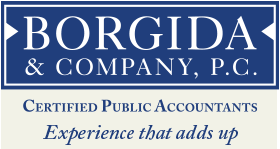
Investors with earned income can fund a Roth IRA for up to $6,000 annually. Investors age 50 and older can fund an additional $1,000 with a ‘Catch-up” contribution for a total of $7,000 annually. Earned income is from working as an employee or self-employed income from a sole proprietorship or a partnership.
There is an income limitation and phase out however with regards to who (initially) can contribute to a Roth IRA. For single taxpayers in 2019 this phase out starts when their Adjusted Gross Income (AGI) income exceeds $122,000. They are ineligible to contribute to a Roth IRA when their AGI reaches $137,000. For married couples filing a joint return the phase out starts at $193,000 of AGI and they are ineligible to contribute when their AGI exceeds $203,000.
‘Back Door’ Roth IRA
For many years more aggressive investors who were not eligible to fund Roth IRA due to their income level were funding a Roth IRA by using the ‘Back Door’ Roth IRA. This involved funding a non-deductible IRA and then immediately converting this to a Roth IRA. Many advisors were not endorsing this approach as it appeared to be a violation of the ‘Step transaction doctrine.’ In 2018 the IRS indicated they would not challenge taxpayers using the ‘Back Door’ Roth IRA.
For example, Joe and Mary earn $225,000 annually. They contribute the maximum to their 401(k) plans every year and they would like to save more for retirement. Due to their income, they are ineligible to fund a Roth IRA. However, now with the IRS acquiescing, they can take advantage of the ‘Back Door’ Roth IRA. As they are both over age 50, they could each contribute $7,000 annually to a non-deductible IRA and then do a conversion using the ‘Back Door’ Roth IRA. Of course they could have saved this combined $14,000 and invested in a taxable account. This would not be as tax efficient however. In a taxable account any interest, dividends and capital gains are taxed in the year earned. This is not the case with the Roth IRA. Funds inside a Roth IRA grow tax free. To have the funds in a Roth IRA be tax free on a qualified distribution, you need to meet two criteria:
- The Roth IRA account needs to be open for five years.
- The Roth IRA account owner needs to be at least age 59 ½.
That’s it. Meet these two conditions and all of the Roth IRA distributions are income tax free. You can see how much more tax efficient a Roth IRA is over investing in a taxable account. One caveat, if the account holder is under age 59 ½ and takes a distribution from a Roth IRA that has been open 5 years – any earnings on the account beyond the conversion amount will be taxable.
Caution needs to be exercised however if you are considering a ‘Back Door’ Roth IRA. If you already have assets in an IRA, SEP IRA or SIMLE IRA, the approach may not work for you. If you don’t have any assets in these vehicles, you can do a ‘Back Door’ Roth IRA no problem. If you have assets in any of these accounts, the ‘Pro-Rata’ rule comes into effect. Essentially, having assets in these accounts will diminish the tax advantage as all of the conversion from the IRA to the Roth IRA will not be income tax free.
Required Minimum Distribution (RMD) Rules
Unlike a traditional IRA, the Roth IRA is not subject to the Required Minimum Distribution Rules (RMD). These rules require taxpayers with IRA’s and 401(k)’s to begin taking distributions from these accounts when they turn age 70 ½. The IRS uses a life expectancy table to determine the annual RMD. The RMD rules do not apply Roth IRA’s for the account holder or the surviving spouse over their lifetime. This may allow a Roth IRA to grow income tax free for decades.
Currently however, RMD rules do apply to inherited IRA’s and Roth IRA’s to any non-spousal beneficiary. These beneficiaries could be children, grandchildren or someone unrelated to you that you want to inherit your Roth IRA. Under current law, a non-spousal beneficiary can take their RMD’s over their lifetime using the same life expectancy table. These are called “Stretch IRA’s” as they extend the payout period over the life expectancy of the beneficiary rather than the original account holder.
Pending Legislation under SECURE Act
There is however pending legislation to remove the Stretch IRA. Congress has passed the SECURE Act and the Senate has passed a slightly different version of its legislation. The proposals would no longer allow non-spousal beneficiaries, children, grandchildren and others to take their RMD’s over their lifetime. If the legislation is passed, for non-spousal beneficiaries, the funds would need to be withdrawn in 10 years for inherited IRA’s, Roth IRA’s and 401(k)’s. The two chambers have not currently agreed on a bill. The President however has indicated he will sign the legislation. While the potential loss of the Stretch IRA is definitely not pro-taxpayer, the Roth IRA still remains a great wealth transfer tool for many investors.
ACTION ITEM
For investors that are not eligible to contribute to a Roth IRA due to income limitations, a ‘Back Door’ Roth IRA makes a lot of sense. Read more articles on IRAs. If you have any questions, please give our office a call. We will be happy to assist you.


